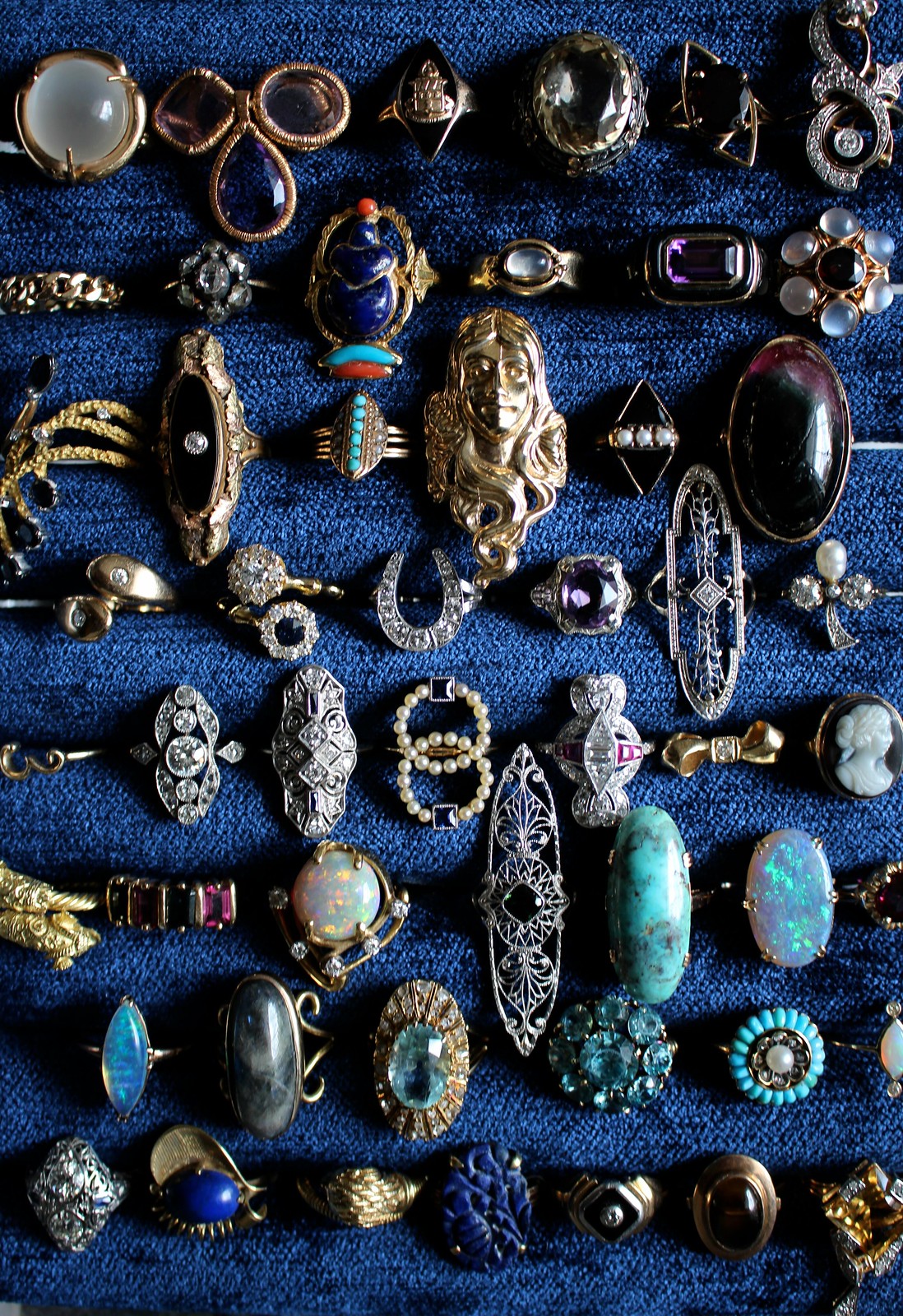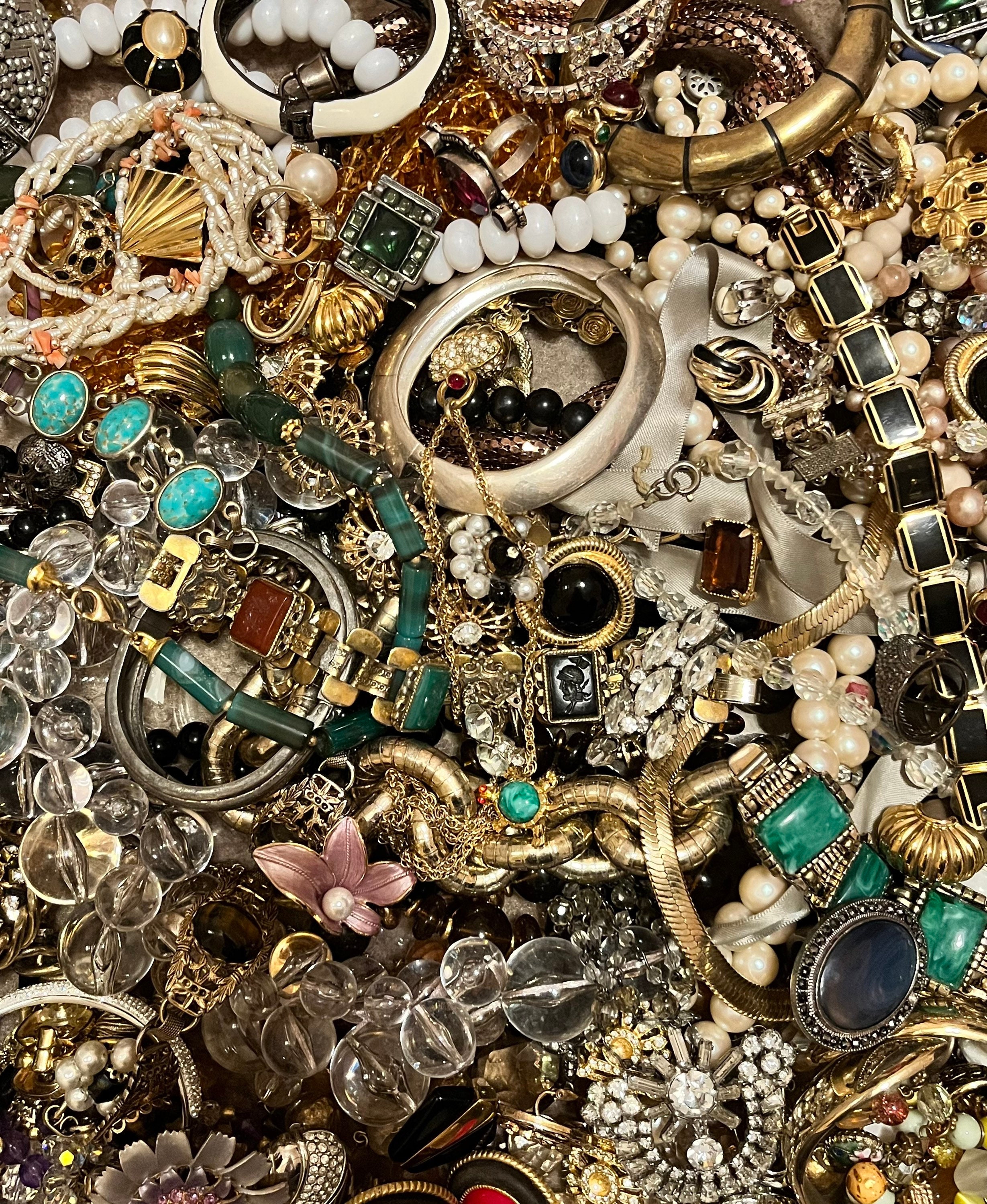Estate Jewelry Near Me: Top Stores and Dealers Near You for Vintage Finds
Discover the Rich History Behind Stunning Estate Precious Jewelry Collections
The expedition of estate jewelry collections offers an one-of-a-kind window into background, revealing the complex connection between workmanship and cultural evolution (estate jewelry austin). Each piece is not simply a testament but an accessory to the artistic motions and social values of its time, from the luxuriant details of the Victorian period to the streamlined sophistication of the Mid-Century Modern. As we analyze these remarkable artefacts, we reveal stories that transcend generations, triggering us to think about not simply their appeal, but the lives they have touched and the minutes they have seen. What keys might these collections still hold?
The Beginnings of Estate Fashion Jewelry
How did estate jewelry pertained to personify the rich history and creativity of past eras? The origins of estate jewelry can be mapped back to different periods of craftsmanship, where jewelry was not simply an accessory but a reflection of societal values, technological innovations, and artistic expressions. Each item narrates, often related to the lives of their previous proprietors, enveloping individual stories together with historical contexts.
The term "estate precious jewelry" commonly describes previously owned pieces, commonly from significant eras such as Victorian, Art Nouveau, or Art Deco. These items were created with meticulous attention to detail, showcasing the ability of artisans who utilized products like gold, silver, and valuable gems. Unlike contemporary precious jewelry, estate items commonly include distinct designs that highlight the looks of their time, hence serving as tangible links to the past.

Significant Style Eras
Throughout background, a number of noteworthy design periods have significantly influenced the development of estate fashion jewelry, each characterized by distinctive designs, products, and cultural contexts. The Georgian era (1714-1837) marked the beginning of intricate styles, typically including nature-inspired themes and the usage of materials like gold, silver, and gemstones embeded in fancy setups. Following this, the Victorian era (1837-1901) presented charming themes, with emotional fashion jewelry and cutting-edge strategies such as using enamel and cameos.
The Art Nouveau duration (1890-1910) celebrated natural forms and the appeal of nature, making use of materials like opals and pearls in streaming designs. This was done well by the Art Deco age (1920-1939), which embraced geometric patterns, bold shades, and extravagant materials such as platinum and diamonds, showing the modernist spirit of the time.
The Mid-Century Modern age (1940-1960) showcased structured layouts and the usage of non-traditional products, stressing minimalism and functionality. Each of these ages not just shows the creative movements of their time yet also envelops the social worths and technological advancements that shaped jewelry style, making them an interesting subject for historians and collectors alike.

Famous Estate Jewelry Collections
The abundant background of estate jewelry is beautifully exemplified by a number of prominent collections that showcase the creativity and craftsmanship from numerous layout eras. One of the most well-known is the Cartier Collection, which shows the deluxe and advancement of the iconic French jewelry expert. Pieces from this collection typically include intricate designs and splendid gems, highlighting the brand's commitment to great workmanship.
One more blog here noteworthy collection is the Lady of Windsor's jewelry collection, which consists of numerous distinctive items, consisting of the famous "Windsor" bracelet. This collection not just exemplifies the beauty of the Art Deco duration but additionally lugs a rich narrative of love and loss, as it belonged to Wallis Simpson, who notoriously married Edward VIII.
The collection of the late actress Elizabeth Taylor also stands out in the world of estate fashion jewelry. With countless items created by prominent jewelry experts like Bulgari and Cartier, her collection symbolizes prestige and elegance, underscoring her individual style and fondness for special gemstones.
These well-known estate jewelry collections serve as a testament to the long-lasting allure of great fashion jewelry, using insight into the imaginative and cultural activities that shaped their development.
The Social Significance
Estate fashion jewelry collections hold profound cultural value, showing not only the visual worths of their particular periods but additionally the social and historical contexts in which they were produced. Each piece typically embodies the workmanship and artistic fads of its time, showcasing the development of design and technology in precious jewelry production.
Moreover, these collections work as tangible links to cultural traditions and routines. As an example, wedding event bands and treasure brooches might symbolize love and domestic bonds, while pieces embellished with particular gemstones can represent cultural or local identifications. The products made use of-- whether gold, silver, or jewels-- frequently inform tales of trade, exploration, and the wealth accumulation of cultures.
In addition, estate jewelry can work as historic artifacts, supplying insights right into the lives of people and the social standards they browsed. The method fashion jewelry was used and valued can disclose much about sex duties, status, and individual expression within varying try this out social landscapes. Estate jewelry goes beyond plain ornamentation, acting as a rich narrative of human experience, artistry, and social heritage, inviting contemporary audiences to engage with the past in a significant method.
Caring for Your Estate Parts
Caring for estate fashion jewelry pieces needs a thoughtful technique to guarantee their longevity and maintain their unique features. To maintain the beauty of these prizes, it is important to manage them with treatment. Constantly clean estate jewelry utilizing a soft, lint-free fabric after each wear to remove oils and dust. For much deeper cleaning, use a moderate soap solution and a soft brush, taking care to stay clear of severe chemicals that might harm fragile products.
Storage is similarly important; shop pieces independently in a fabric-lined box to avoid scratching and entangling. Take into consideration using anti-tarnish bags or towels for silver products, as this helps to slow down the tarnishing process. Furthermore, stay clear of revealing jewelry to extreme moisture, extreme temperatures, or straight sunshine, which can negatively influence steels and gems.
Regular evaluations are vital. Look for loose stones, worn holds, or harmed setups, and seek professional repairs when needed. Consulting a jewelry expert experienced in vintage or antique pieces can offer specialized treatment choices. By carrying out these practices, collection agencies can preserve their estate jewelry's historic and aesthetic value, ensuring these pieces remain to be treasured for generations to find.
Verdict
To conclude, the exploration of estate fashion jewelry collections discloses a tapestry of artistic expression and social value, reflecting the values and appearances of different historical durations. When owned them, each piece serves as a testament to extraordinary workmanship and the narratives of those that. Comprehending the origins, layout periods, and notable collections boosts appreciation for these artifacts, highlighting their function in protecting social heritage and encouraging ongoing stewardship and care for these impressive treasures.
The exploration of estate fashion jewelry collections supplies an one-of-a-kind home window into background, exposing the detailed relationship between craftsmanship and cultural development. The beginnings of estate precious jewelry can be mapped back to numerous periods of workmanship, where fashion jewelry was not just an accessory but official website a reflection of social values, technical innovations, and creative expressions.The term "estate precious jewelry" generally refers to secondhand pieces, often from substantial ages such as Victorian, Art Nouveau, or Art Deco.The abundant background of estate fashion jewelry is perfectly exhibited by numerous prominent collections that showcase the virtuosity and workmanship from different layout ages.In verdict, the exploration of estate jewelry collections exposes a tapestry of creative expression and social significance, mirroring the values and appearances of numerous historical durations.